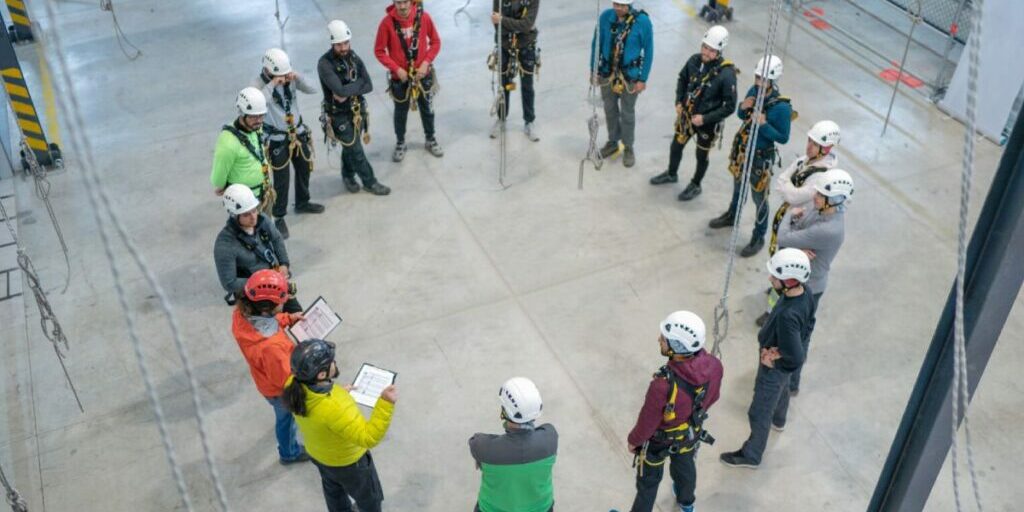Director of EPA Offers Insights on Justice40 & Environmental Justice

Engineering News-Record recently interviewed Matthew Tejada, the Director of the EPA’s Office of Environmental Justice, and had an enlightening opportunity to hear his thoughts on environmental justice, in particular how it related to the Biden initiative titled Justice40.
Environmental Justice
But first, what exactly is Environmental Justice (EJ)? From the EPA website:
“Environmental justice (EJ) is the fair treatment and meaningful involvement of all people regardless of race, color, national origin, or income with respect to the development, implementation and enforcement of environmental laws, regulations, and policies.
Fair treatment means no group of people should bear a disproportionate share of the negative environmental consequences resulting from industrial, governmental and commercial operations or policies.”
There’s a tendency for the most undesirable industrial facilities to be built in the least financially well-off part of town. This occurs for many reasons, not the least of which is that wealthier people have the financial resources to pay for property further away from industrial hubs.
Building Unwanted Structures Downwind
Some studies, including one highlighted by the Guardian, note the pattern of the poorer side of town being on the east side of cities due to the wind. As such, city planners may have considered this when building facilities that created air pollution. (If they didn’t, they’d undoubtedly get calls from numerous unhappy residents when air pollution from a new processing plant wafted through downtown.) They put all the industrial facilities on the downwind part of town, which ends up being the least desirable. This makes it the most affordable, and where the less financially well-off end up moving.
One author of the study is quoted as, “Basically what we’ve been seeing in the past, because of pollution and wind patterns, is rich people escaping the eastern parts of town, because they were very polluted.”
Their study uses mathematical models to predict where pollution would end up in a region. They then confirmed that indeed the most polluted areas would become the most disadvantaged. On the brighter side, they also observed that the deprivation of an area faded when the pollution did.

Other factors their study found that affect gentrification is “rings of poverty around a more affluent core.” This trend is more prevalent in European countries where their study was based. In the US, the pattern is often the opposite, where the suburbs are more affluent, and the cities can be more impoverished. Detroit is the leading example cited.
In all cases, wealthier people buy the most desirable properties, and the least desirable properties become the most affordable to less affluent communities. This is fundamentally why Biden’s Justice40 initiative is directly targeted to assist poorer communities. They’re the most adversely affected by environmental hazards and byproducts.
Justice40 and Environmental Justice
What is Justice40? A July 2021 Whitehouse Briefing describes it as follows.
“Justice40 is a whole-of-government effort to ensure that Federal agencies work with states and local communities to make good on President Biden’s promise to deliver at least 40 percent of the overall benefits from Federal investments in climate and clean energy to disadvantaged communities.”
Some of its core initiatives entail:
- Flood mitigation assistance programs to reduce damage to buildings and communities from repetitive floods.
- Drinking water improvement measures including reducing contamination and supporting water systems.
- Lead Hazard Reduction to identify and prevent people from lead-based paint exposure.
- Rural Energy Programs which provide financing for rural agriculture and small businesses for renewable energy systems and energy efficiency improvements.
Part of Justice40 is to further identify measures they can take to effect change to assist struggling communities.
One essential tool for promoting Environmental Justice is EJScreen, which is an Environmental Justice Screening and Mapping Tool. From its website:
“EJScreen provides the EPA with a nationally consistent dataset and approach for combining environmental and demographic indicators. EJSCREEN users choose a geographic area; the tool then provides demographic and environmental information for that area.”
As EPA director Matthew Tejada describes, the ability to start with a data-driven view of the current environmental situation gives them critical information right at their fingertips. It provides color-coded mapping, the ability to generate ecological reports for a selected area. It also provides comparisons showing how one area measures up to others on a local, regional or national scale. Its environmental indicators include hazards such as cancer risk, lead paint indicator, hazardous waste proximity, ozone, respiratory hazards, wastewater indicator, and traffic proximity. It also includes demographic information, including education levels and ethnicity.
Creating such a report manually would be costly and time-consuming, taking months of work and data digging and analysis. In some cases amassing all the environmental factors would be beyond the capacity of a department to reasonably determine. Now, first responders to natural or environmental disasters can access it in real-time to learn quickly about the risks involved.
At the core of the issue is permitting. The EPA is charged with granting permits for new facilities. Before tools like EJSCREEN, the EPA may have only taken into consideration the immediate impact to the plot of land. They may not have looked to the facility next door and considered the cumulative effect on the environment. In Director Tejada’s words, “I think those days are starting to pass us by.” He continues that analyzing the effects each new facility may have is considered in their evaluation of permits.
Having a color-coded report greatly assists the conversation. Not everyone understands the finer intricacies of environmental pollution, but all can understand the difference between red and green. When the EPA sits down with a state, tribe, or community organizer, they can look at the map and start to investigate why some areas are in the red and then begin to explore solutions to improve it. It allows everyone to come to the table and have meaningful discussions.

Another part of the Environmental Justice discussion is getting community buy-in for new industrial developments. In some cases, developers may have been inclined to expedite the approval process with minimal community involvement. Director Tejada observes that this can lead to conflicts and legal initiatives to fight them. For example, years ago, a community public hearing may have been scheduled in the middle of the day at a hotel, which many people were not likely to attend. He notes the importance of hosting community meetings on nights or weekends and at venues the impacted communities are likely to attend. A church, school, or community center is a much better place to engage with many communities.
Another factor in fostering community engagement is to go beyond hosting a public hearing but empowering the community to engage in it. Director Tejada notes that various federal laws are central to everything they do. Giving people the tools they need to effect change in their communities is one way to ensure projects will go smoothly. He says,
“If people put the time in upfront, you make things cheaper and quicker because you’re eliminating the fights. You’re eliminating the courts. You’re eliminating the protests in a lot of cases.”
Environmental Justice can be seen as either too hard, too challenging, or too ambiguous to take on. The focus of the EJ program is to bridge those gaps and ensure construction can take place with the proper safeguards and understanding of those affected by it.
Director Tejada concludes, “It’s important to remember that one of the best things you can do if you’re encountering environmental justice and you’re not sure what to do about it, is to talk to the community.”
Read the full story here on ENR.
What’s your experience with Environmental Justice? Tell us about it here.




